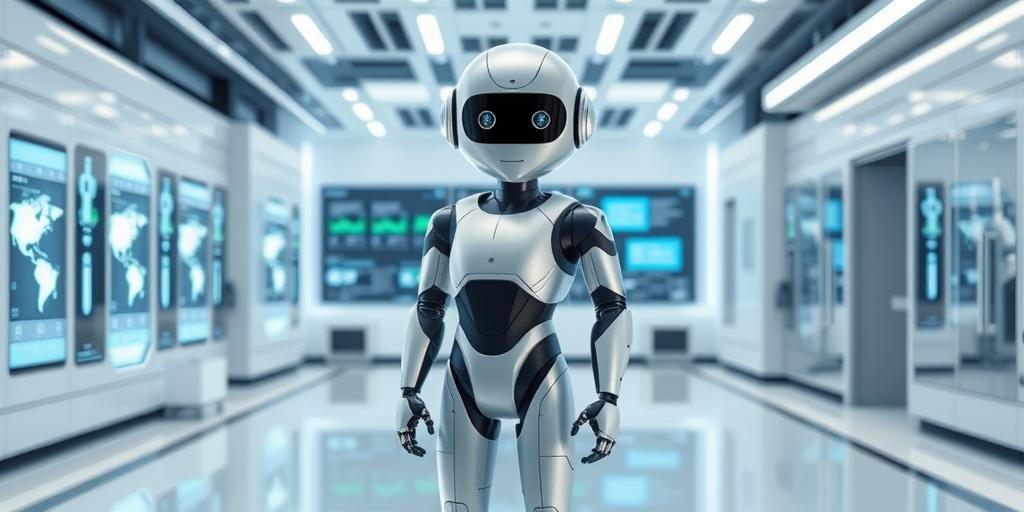Humanoid Robots: How Close Are We in 2025?
The world of robotics is rapidly evolving, and humanoid robots—machines designed to mimic human form and behavior—are at the forefront of this technological revolution. As we approach 2025, it’s essential to assess just how close we are to seeing these robots integrated into our daily lives. This post will explore the current state of humanoid robot technology, the key advancements driving progress, and the remaining challenges that need to be overcome.
Current State of Humanoid Robots
Today, humanoid robots are primarily used in research, development, and some specialized industrial applications. Companies like Boston Dynamics, Honda, and Toyota have invested heavily in developing advanced humanoid platforms. These robots can perform tasks such as walking, running, grasping objects, and even basic problem-solving.
Key features of current humanoid robots include:
- Advanced Locomotion: Sophisticated algorithms and sensors enable robots to navigate complex terrains and maintain balance.
- Dexterous Manipulation: End-effectors (hands) are becoming more refined, allowing robots to grasp and manipulate objects with increasing precision.
- Perception and Sensing: Robots use cameras, LiDAR, and other sensors to perceive their environment and make informed decisions.
- Artificial Intelligence: AI algorithms, particularly machine learning, enable robots to learn from experience and adapt to new situations.
Key Advancements Driving Progress
Several factors are contributing to the rapid advancement of humanoid robot technology:
-
AI and Machine Learning: AI is the brains behind humanoid robots. Machine learning algorithms allow robots to learn from data, improve their performance, and adapt to changing environments. Deep learning, a subset of machine learning, is particularly useful for tasks such as image recognition and natural language processing.
-
Materials Science: The development of new materials is enabling the creation of lighter, stronger, and more flexible robot components. This is crucial for improving robot mobility, durability, and energy efficiency. Advanced polymers, composites, and alloys are being used to build robot bodies, limbs, and joints.
-
Sensor Technology: Robots need to perceive their environment to interact with it effectively. Advances in sensor technology, such as high-resolution cameras, LiDAR, and tactile sensors, are providing robots with more detailed and accurate information about their surroundings. These sensors enable robots to perform tasks such as object recognition, navigation, and collision avoidance.
-
Actuation Systems: Actuators are the muscles of robots, responsible for generating motion. Electric motors, hydraulic systems, and pneumatic systems are commonly used to actuate robot joints. Recent advances in actuation technology include the development of more compact, efficient, and precise actuators, which are essential for creating robots with human-like agility and dexterity.
Challenges and Obstacles
Despite the significant progress made in recent years, several challenges remain before humanoid robots can become commonplace:
- Cost: Humanoid robots are still very expensive to design, manufacture, and maintain. The high cost of components, such as sensors, actuators, and processors, makes it difficult to mass-produce these robots.
- Energy Efficiency: Humanoid robots consume a lot of power, which limits their operational time. Improving energy efficiency is crucial for enabling robots to perform tasks for extended periods without needing to be recharged.
- Robustness and Durability: Humanoid robots need to be able to withstand harsh conditions and unexpected events. Improving the robustness and durability of robots is essential for ensuring that they can operate reliably in real-world environments.
- Ethical and Social Implications: As humanoid robots become more advanced, it’s important to consider the ethical and social implications of their use. Issues such as job displacement, privacy, and safety need to be addressed to ensure that robots are used responsibly and ethically.
Predictions for 2025
By 2025, we can expect to see further advancements in humanoid robot technology, but widespread adoption is still likely some years away. Here are a few predictions:
- Increased Use in Logistics and Manufacturing: Humanoid robots will likely find increased use in logistics and manufacturing, performing tasks such as package delivery, warehouse automation, and assembly line work.
- Growing Research and Development: Research and development efforts will continue to focus on improving robot locomotion, manipulation, perception, and intelligence. This will lead to the development of more advanced and capable humanoid robots.
- Emergence of Niche Applications: Humanoid robots may find niche applications in areas such as healthcare, education, and entertainment. For example, robots could be used to assist elderly patients, provide personalized tutoring, or perform in theatrical productions.
In conclusion, while humanoid robots have made significant strides, they are not yet ready for widespread use in 2025. The technology is rapidly advancing, and we can expect to see further progress in the coming years. However, significant challenges remain in terms of cost, energy efficiency, robustness, and ethical considerations. As these challenges are addressed, humanoid robots will gradually become more integrated into our lives.
